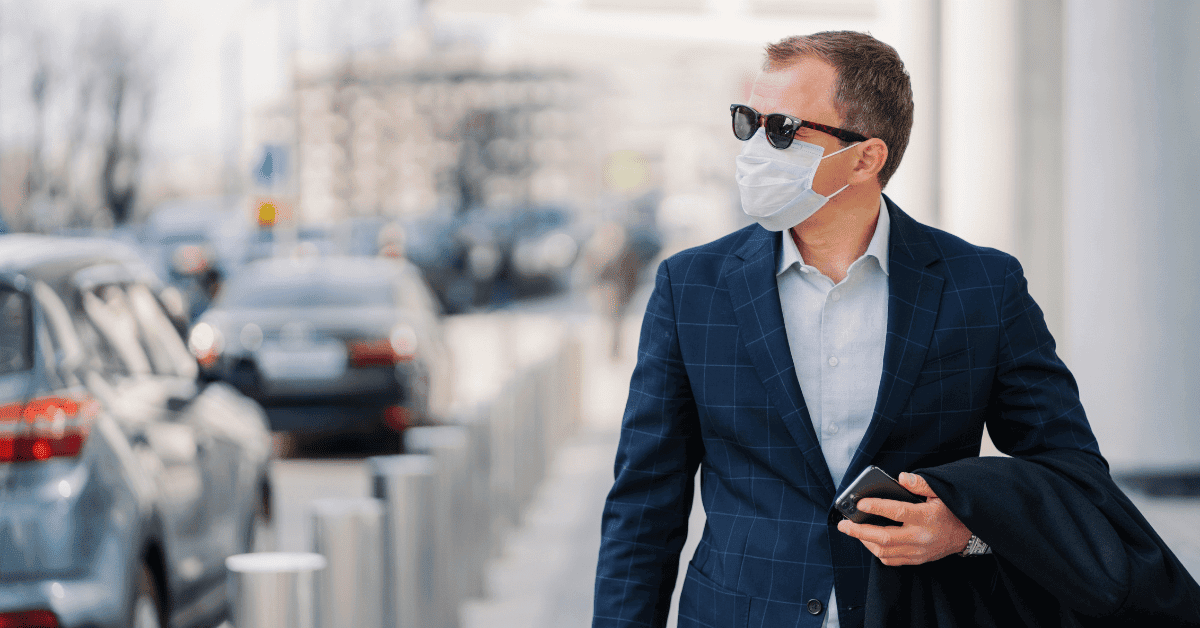What Are the COVID-19 Return-to-Work Guidelines for Dental Practices?

“An abundance of caution…” That phrase might seem momentarily overused but it certainly applies to the return-to-work guidelines for dental practices during the COVID-19 era.
Caution or purely risk management – it’s vital during the COVID-19 pandemic and beyond to carefully follow necessary recommendations.
Return-to-work guidelines for dental practices and how you can expect to adjust to dentistry beyond sole emergency care
You’ve perhaps been treating patients as an emergent care need arises during the COVID-19 lockdown period. This has required you to safeguard your patients, your team, and yourself for those procedures.
That same cautionary and protective mindset will of course continue as you apply the broader return-to-work guidelines for dental practices as outlined by the ADA (American Dental Association) in cooperation with the CDC (Centers for Disease Control).
”It is recognized that different areas will return to a more familiar style of practice at different times, and under different circumstances. Each dentist will need to incorporate their clinical judgment with their knowledge of the incidences of COVID-19 cases in their area, the needs of their patients, and the availability of any necessary supplies to re-engage in the provision of elective dental care.”
The ADA also recognizes that as knowledge about COVID-19 evolves more recommendations will be necessary that could impact how you practice dentistry going forward.
It’s important that you feel a strong sense of advocacy and support from the ADA and their appointed or affiliated task forces.
Return-to-work guidelines for dental practices and your patient appointments
Patients will require loads of reassurance as lockdown restrictions are lifted and you re-open your dental practice for routine dentistry. There are key areas to focus on and provide clear patient communication about.
Infection control
As you know, infection control is a routine requirement for your dental operations. But it’s now more front-of-mind for your patients because of COVID-19.
A simple, brief communication (a letter or email) delivered to your patients could help with their related anxiety.
- Reassure them about your standard of care commitment to maintaining infection control
- Inform them about any specific protocols you’ve been following during the pandemic for emergency care and what you’re doing prior to reopening your practice
- Cover the full scope of cautionary actions you’re taking such as pre-screening, personal and professional sanitizing procedures, social distancing support, waiting area/receptions changes, etc.
Pre-appointment screening
The advanced screening of your patients is intended for their safety, the safety of your other appointed patients, your team, and you. It’s recommended that you adapt your scripted questions to be as conversational and non-threatening as possible – while maintaining a sense of urgency for the process.
Pre-appointment communication and questions are designed to collect necessary information prior to their office visit.
- Explain that the purpose of your contact/call is to remind them about their appointment and to gather necessary health information before they arrive.
- Ask pre-screening questions about specific health issues such as fever, shortness of breath, cough, flu-like symptoms, contact with COVID-19 positive patients, travel (within past 14 days), etc.
- Inform them that these questions will be repeated on-site and their temperature will be taken upon arrival at your office.
- Remind them to limit their companions for the appointment. This is to reduce the number of people in your reception area. Reassure them that these actions are necessary for everyone’s safety.
- If you must leave a voicemail – ask them to call your office for the necessary pre-appointment conversation. If possible, you can also securely provide a related questionnaire with instructions on your website for their convenience.
Additional day-of appointment protocols could include…
- (If practical) ask patients to text/call when they arrive and wait in their transportation or personal vehicle until you notify them or escort them to enter for their pre-appointment check and their appointment.
- Ask your patients to bring their own pens for paperwork or provide one they can keep or take with them.
- Consider waiving cancellation policies and inform them of such in case of illness, etc that would prevent them from their appointment.
In-office patient registration
This is a “before,” “during,” and “after” process. It’s vital that you have a checklist mindset to cover all scenarios from arrival to check-in to treatment to check-out to departure.
- Have hand sanitizer and masks available for arriving patients to use.
- Remind your patients that a temperature check is necessary prior to their treatment. Use a touch-less forehead temperature scan if possible or a standard (protected) thermometer that’s disinfected after each use. An elevated temperature (>100.4 degrees) will require the patient to don a mask and you (the dentist) to be informed immediately.
- Require your patients to complete or provide a completed Patient Screening Form. Provide opportunity for a confidential discussion with a patient revealing any positive responses that could postpone treatment or that indicates a health issue.
- Clean/disinfect all reception/front-desk or check-in related surfaces following each patient interaction.
After their appointment escort your patient to a designated exit point that limits public contact as much as possible. And remind your patients to report any personal signs or symptoms of COVID-19 they experience within the next 14 days.
Post-treatment financials could be required at check-out. Make use of touch-less or virtual payment portals such as chip technology credit card readers or Apple Pay. These technology solutions are convenient and can help reduce the physical contact risk.
Reception and front-office space management
A COVID-19 ready dental office is one that’s proactively prepared. The message you send to your patients can help alleviate their anxiety while providing protection for them and your team.
- Prepare your entry space with a notification about available hand sanitizer and have sanitizing options throughout your reception and front-desk areas.
- Provide and routinely check the availability of tissues, hand sanitizer, soap in restroom(s), and trash cans.
- Remove reception area seating to maintain a minimum of chairs that are six feet apart. Also remove toys, reading materials, and hospitality amenities such as coffee/tea service, etc.
- Routinely disinfect all touchable surfaces following appointments.
Clinical and chair-side safety – including PPE (Personal Protective Equipment)
Again, you’re aware and routinely prepared for an infection-controlled clinical environment. COVID-19 has, of course, increased the cautionary mindset and added some necessary layers of protection to keep you and your team safe during procedures.
It’s important to reduce the amount interaction with non-clinical staff as much as possible. That would include limiting chair-side “paperwork” such as charting, treatment presentations, and other related documentation that’s typically presented or used.
Plan for safe, alternative solutions to obtain and manage the necessary patient documents.
Keep your clinical staff to a minimum within each operatory. And follow non-contact greetings.
About PPE…
In the COVID-19 era of dentistry it’s essential that all clinical team members wear personal protective equipment (PPE).
PPE covers a broad range of protective gear. The basics you’re advised to provide and use are as follows:
- Gloves – worn at all times inside and outside the op and when cleaning any clinical or front-office/reception area.
- Masks – the best available PPE for each clinical team member including (per availability) N95 and level 2 and 3 masks.
- Glasses/protective eye-wear – worn for protection from ANY FORM of aerosol and disinfected appropriately following each use.
- Face shields – additional coverage protection that also accommodates you/your team members use of loupes and headlamps.
- Lab coats – disposable or cloth coats that cover areas from the neck to the knees and to the wrists.
- Hair covers – an important precaution that can include a bandana, scarf, or surgical bonnet each made of cloth (washing required) or disposable material.
Cleaned, ready-to-use PPE should be donned appropriately. A top-to-bottom application and a reversed (bottom-to-top) removal is essential.
- Provide team training and practice to ensure that your team members are using PPE correctly.
- Reference CDC or ADA videos for additional information.
End-of-day and other routines
What-happens-in-the-office-stays-in-the-office. The simplicity of that phrase should apply to how you safely end each day of scheduled treatment.
Basically all clinical attire worn from scrubs to shoes should stay in-house. Change from your “street” clothes and shoes into clinical attire upon arrival. And leave all clinical clothing and shoes behind after changing at the end of the day.
It’s recommended that you use a laundry service or your own in-office appliances to clean your clothing. And PPE should be worn by those handling any exposed clothing. If you use a laundry service – bag all clothing items safely for pick-up.
Once PPE/clinical attire is disposed of wash your hands thoroughly.
About supply deliveries…
Accept your office deliveries outside of your facility at a pre-designated, convenient location. Disinfect all deliveries once you bring them into your facility.
Another good idea…
Designate a clinical team member (hygienist or dental assistant) as your “environmental/sanitization” leader. Give them responsibility for monitoring and managing all practice protocols and necessary supply chains.
And keep team communication constant and clear. Reminders about return-to-work guidelines and all-things PPE will keep your patients, team, and yourself safe during this pandemic season.
Support and deeper clarification for this article’s information is available. The ADA’s thorough clinical recommendations are available in more detail in their “Return to Work Interim Guidance Toolkit.”
And an additional “re-opening” overview, including some of the information mentioned here, is available from Jameson.
As a dental industry technology and software provider we’re in this together with you as a solo private practice, private group practice, or DSO.
Above all, we’re here to help you treat your patients safely.
Contact us for more information about upgrading and safely streamlining your point-of-contact systems including paperless forms and touch-less payment solutions. We can also assist with your operational tasks…and costs…now and in the future.



